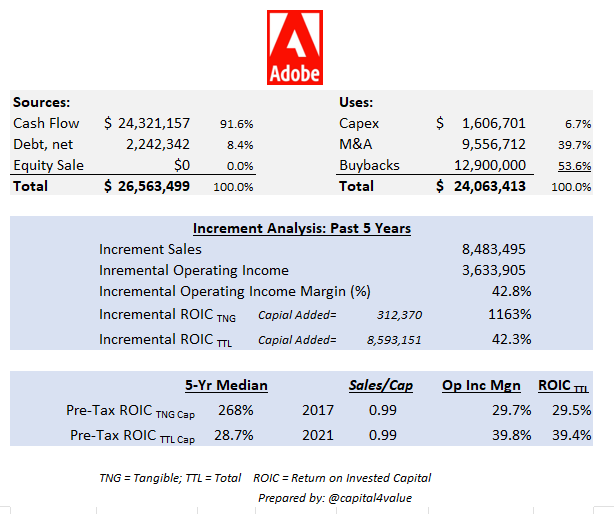#SMB Value Tip:
Not all Revenue is created Equal
Cash or Accrual bookkeeping track revenues differently
-Cash is the ACTUAL cash revenue in the bank for the period
-Accrual shows the BILLED revenue (uncollected)
Accounts Receivables helps bridge the gap
Let's explore...👇
Not all Revenue is created Equal
Cash or Accrual bookkeeping track revenues differently
-Cash is the ACTUAL cash revenue in the bank for the period
-Accrual shows the BILLED revenue (uncollected)
Accounts Receivables helps bridge the gap
Let's explore...👇
1/x
Depending on the biz size, accounting may elect for Cash or Accrual books
Many #SMB use Cash books due to its ease of use & practical nature
Larger firms may use Accrual books due to its advanced ability to track assets & liabilities, & match revenues with expenses
Depending on the biz size, accounting may elect for Cash or Accrual books
Many #SMB use Cash books due to its ease of use & practical nature
Larger firms may use Accrual books due to its advanced ability to track assets & liabilities, & match revenues with expenses
2/x
Revenue under Cash is the cash deposited into the account
Revenue under Accrual books is the cash billed to customers but not collected
Accounts Receivable (A/R) should be tracked for both books
But Cash books will NOT show A/R on the Balance Sheet & is tracked separate
Revenue under Cash is the cash deposited into the account
Revenue under Accrual books is the cash billed to customers but not collected
Accounts Receivable (A/R) should be tracked for both books
But Cash books will NOT show A/R on the Balance Sheet & is tracked separate
3/x For due diligence always ask for an Aging Accounts Receivable report showing old A/R
The older the amount the less likely you can collect. You want to see tight controls & SOPs for collection
Aging A/R reports shows days outstanding: Current (0-30 days), 31-60,61-90, 90+
The older the amount the less likely you can collect. You want to see tight controls & SOPs for collection
Aging A/R reports shows days outstanding: Current (0-30 days), 31-60,61-90, 90+

4/x Analyzing Cash revenue:
- Reported revenue is the Cash received
- Add A/R to get the total 'potential' cash revenue the biz could have earned
Divided A/R by Total Accrual Revenue to show the % loss
- Reported revenue is the Cash received
- Add A/R to get the total 'potential' cash revenue the biz could have earned
Divided A/R by Total Accrual Revenue to show the % loss

5/x Analyzing Accrual revenue:
- Reported revenue is the billed amount & is the 'potential' revenue the biz could have earned
- Subtract A/R to get the total 'potential' cash revenue the biz actually received
Divided A/R by Total Cash Revenue to show the % loss
- Reported revenue is the billed amount & is the 'potential' revenue the biz could have earned
- Subtract A/R to get the total 'potential' cash revenue the biz actually received
Divided A/R by Total Cash Revenue to show the % loss

6/x Summary
Not all revenue is created equal
Know if you are looking at Cash or Accrual books
Be sure to analyze cash collection and potential cash collection for both
Monitor outstanding A/R as a % of Revenue
Not all revenue is created equal
Know if you are looking at Cash or Accrual books
Be sure to analyze cash collection and potential cash collection for both
Monitor outstanding A/R as a % of Revenue
• • •
Missing some Tweet in this thread? You can try to
force a refresh

 Read on Twitter
Read on Twitter






